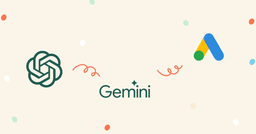
Google’s Play in the AI Search Era & What Advertisers Should Expect
Google’s AI search shift is reducing website traffic, embedding ads in AI responses, and pushing users into its ecosystem—advertisers must adapt to stay ahead.
If you’re anything like me, ChatGPT has become a daily tool.
I use it for everything—quick how-tos (which sometimes lead to purchases), data analysis, creative inspiration, and even questions that barely make sense. Somehow, it always gets me.
AI-driven search is changing how we find information, and Google is feeling the impact. But instead of sitting back and watching its empire shrink, it’s taking action.
Here’s what Google will likely do—and what it means for advertisers.
1. Google’s Search Generative Experience (SGE)
SGE is rolling out, placing AI-generated answers above traditional search results. This means fewer clicks to websites as users get answers directly in Google’s search engine results page (SERP). Instead of driving traffic to businesses, Google is keeping users on its platform longer.
Image from Google
What this means for advertisers: If AI-generated content takes up more search real estate, paid search ads will become more competitive and expensive. Will Google balance this by adding more sponsored ads within SGE?
2. More Ads Embedded in AI Responses
Google won’t risk losing its ad revenue. Instead, it’s integrating ads directly into AI-generated answers, much like Sponsored Shopping ads in AI search snapshots. AI Overviews in Search help you quickly find information and discover all the web has to offer.
Image from Google
What this means for advertisers: Will there be a new network to advertise directly in generative search? I doubt it with how Google keeps taking control away from advertisers. Expect generative search placement to feed through your Performance Max campaigns utilising your asset group and shopping feed.
3. The Rise of “Walled Gardens”
Google is increasingly steering users toward its own ecosystem—YouTube, Google Shopping, Maps, and other owned properties—reducing traffic to external sites. This shift supports a more closed-loop commerce experience, where users can browse, compare, and even complete purchases without ever leaving Google.
What this means for advertisers: Brands relying on direct website traffic from Google may experience a decline in conversions from search ads over time. To stay competitive on Google Ads, businesses will need to adapt to on-platform transactions and optimise their presence within Google’s ecosystem.
The Bottom Line? Paid Media Is Entering a New Era
For years, consumers have changed how they discover products. They’ve moved from simple Google searches to complex buying journeys that require brands to be visible across multiple channels.
Each shift has forced Google to adapt—from the rise of mobile search to changes in ranking and ad placements, and more recently, automation in paid media.
AI-driven search isn’t just another Google update. It’s a complete overhaul of how people find and interact with information online. In 15 years, I haven’t seen a shift this big.
And that makes it an exciting time for advertisers. The brands that embrace change, testing new strategies, prioritising omnichannel experiences, investing in quality content, and focusing on brand-building over short-term hacks—will be the ones that thrive.
As search becomes more integrated, conversational, and platform-driven, adaptability will be the key to staying ahead. The brands that move fast, experiment, and refine their approach will gain a serious competitive edge.
The question is: how ready are you to evolve?

Josh Somerville
Josh is the co-founder of farsiight and has spent the past 12 years scaling PPC campaigns.
Like what you read?
Learn more about digital, creative and platform strategies below.

